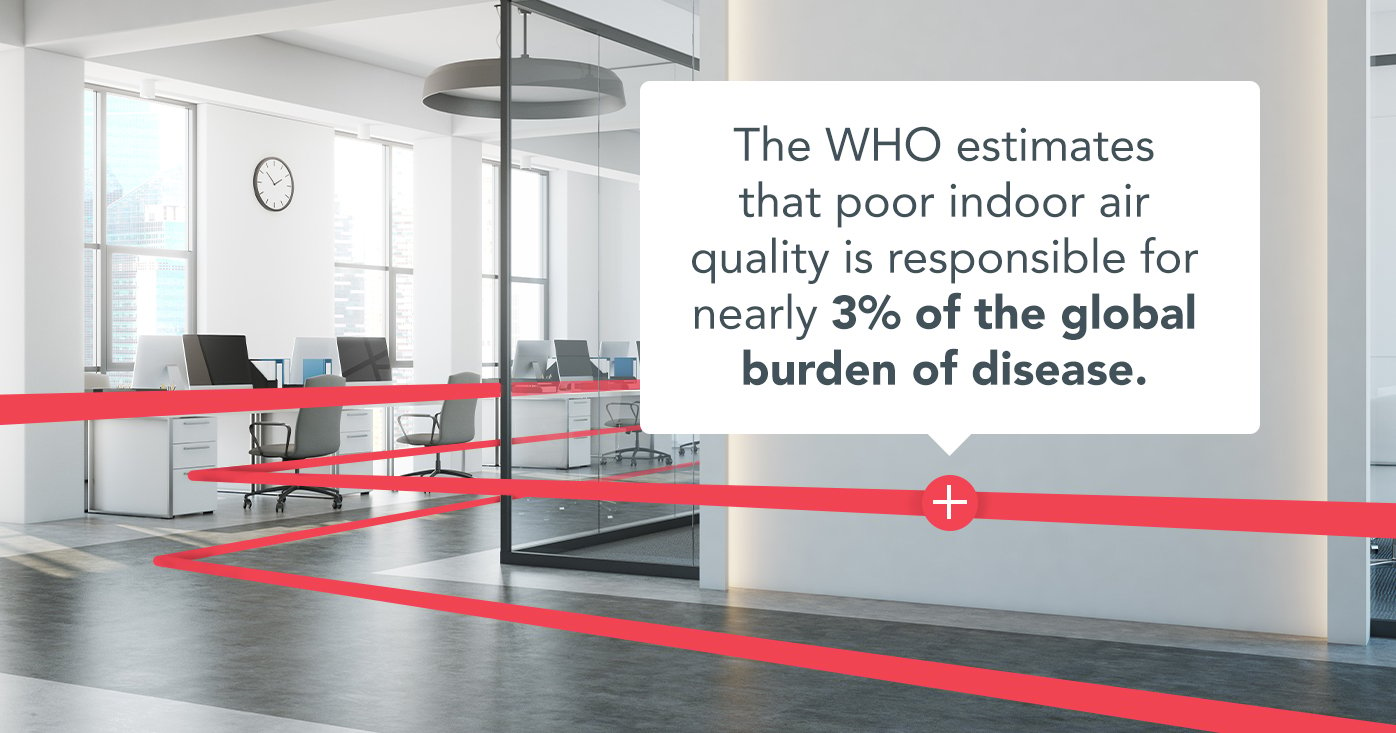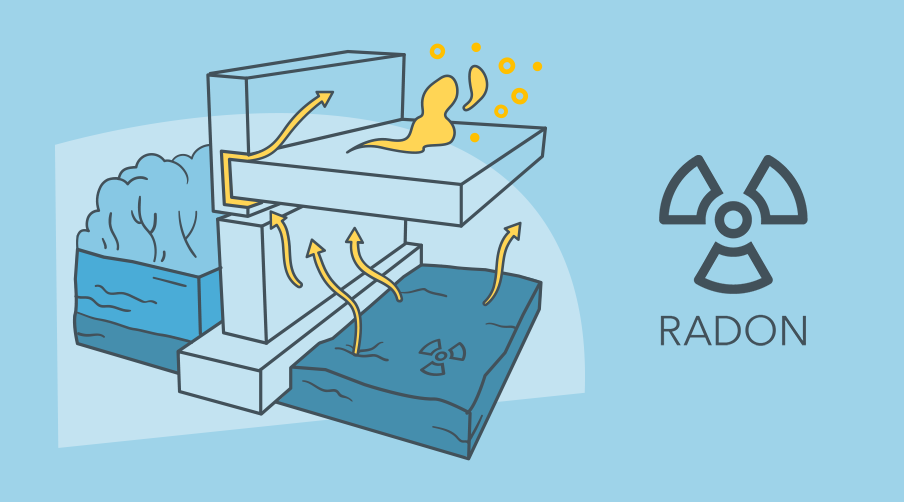Radon is a colorless and odorless gas that escapes into buildings via the lower floors. According to EPA estimates, radon is the number one cause of lung cancer among non-smokers1. In order to safeguard occupants’ safety, radon levels in buildings should constantly be monitored over time.

Contents:
What is radon?
Radon is estimated to cause around 21,000 lung cancer deaths in the US every year.2 In general, radon is estimated to cause between 3–14% of all lung cancers in a country, depending on the national average radon level and smoking prevalence.3
Radon is a colorless and odorless gas which naturally comes from the ground. The rocks and soil beneath buildings contain traces of uranium. Over time, the uranium breaks down and forms other elements, in a process called radioactive decay.
When radon gas decays, it emits radioactive radiation in the form of an alpha particle. Inside buildings, the air pressure tends to be lower than outside, so radon is drawn through the gaps in the floor.4 However, being a gas, radon spreads in the air, reaching the upper floors.
.jpg?width=1235&name=Why-does-radon-in-office-buildings-matter---header%20(1).jpg)

Why should workplaces monitor radon gas?
Modern buildings are often well insulated and sometimes windows are even unusable in order to save on energy costs. However, little airflow can allow radon to build up to high levels and long term exposure can be dangerous.
As radon is a gas, its levels fluctuate over time. Monitoring these fluctuations over long periods of time allows us to have more accurate and meaningful results.
Why is monitoring radon essential for building managers and building occupants?
Radon exposure in schools:
In the US, a nationwide survey of radon levels estimated that nearly one in five schools in the US has at least one schoolroom with short-term radon levels5. These school estimates were above the action level of 4 pCi/L. At this level, the environmental protection agency recommends that schools take mitigation action.
More specifically, in New York approximately 90% of the 4290 upstate schools are located in areas designated by EPA as Zone 1 (4 pCi/L).
Radon is then a problem that every one of us should be concerned about in order to protect ourselves and building occupants.
Legal requirements in schools and workplaces:
As the awareness of radon continues to grow, so does the legislation to help protect employees worldwide.
The EU supports radiation protection through legislation contained in a series of Directives. Across the EU, the current Basic Safety Standards Directive (96/29/Euratom) sets out standards for radiation protection in the Member States4. As part of this, it recommends protection of members of the public, for example from radon in buildings5.
This legislation can also be seen to be reflected in specific countries worldwide. In the UK, for example, radon is identified as a potential hazard in dwellings in the Housing Act 2004, one to remember for landlords6.
Similarly, the UK Ionising Radiations Regulations 2017 7 came into effect where radon is present above the defined level of 300 Bq/m3 (as an annual average) and employers should undertake mitigation.
Recently in Germany, it was announced that they are working on a standard for radon-protected construction and renovation implementation options. It has been said that radon-protected constructions in new buildings and renovations will be prescribed in DIN SPEC 181178.
In the US, a radon test is required in schools in 9 states, and recommended or encouraged in a further 39.
Evidently radon legislation varies depending on your location and the awareness of the issue in that area. By monitoring now, you can ensure you are in front of the legislation and showing that you prioritize the health and wellbeing of your employees and students.


A simple solution
Monitoring radon levels in buildings is fundamental to ensure they remain within the recommended limits for safety. Simple steps such as increasing ventilation will help dissipate high levels. Monitoring radon and other pollutants in your building will allow you to know when high levels accumulate. Take control of the air in your school, office or commercial building to provide a safe, productive environment and optimize energy usage.

Sources:
1https://www.epa.gov/radon/health-risk-radon
2 https://www.epa.gov/radon/health-risk-radon
3 https://www.who.int/news-room/fact-sheets/detail/radon-and-health
4 https://www.ukradon.org/information/radonataglance
5 https://www.ncbi.nlm.nih.gov/pmc/articles/PMC6211050/
6 https://www.ukradon.org/information/tenants
7 https://www.hse.gov.uk/radiation/ionising/radon.htm#legalrequirements
8. https://www.bi-medien.de/artikel-43941-bm-radonsicher-bauen-lueking.bi
9. https://www.ncbi.nlm.nih.gov/pmc/articles/PMC6211050/table/ijerph-15-02149-t001/
 Most popular
Most popular
 NEW
NEW




 Radon
Radon
 Radon
Radon




.jpg?width=1235&name=Why-does-radon-in-office-buildings-matter---header%20(1).jpg)



